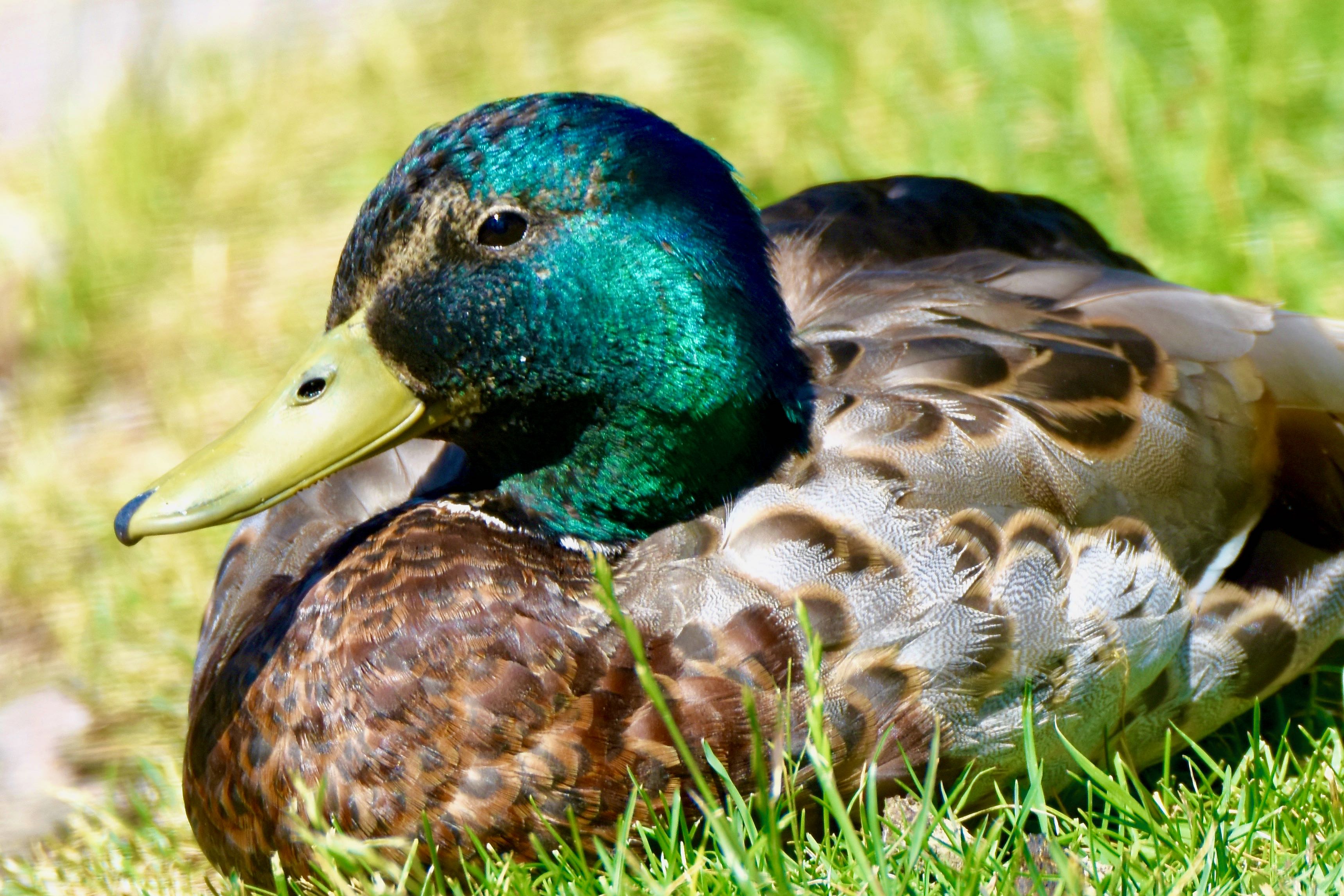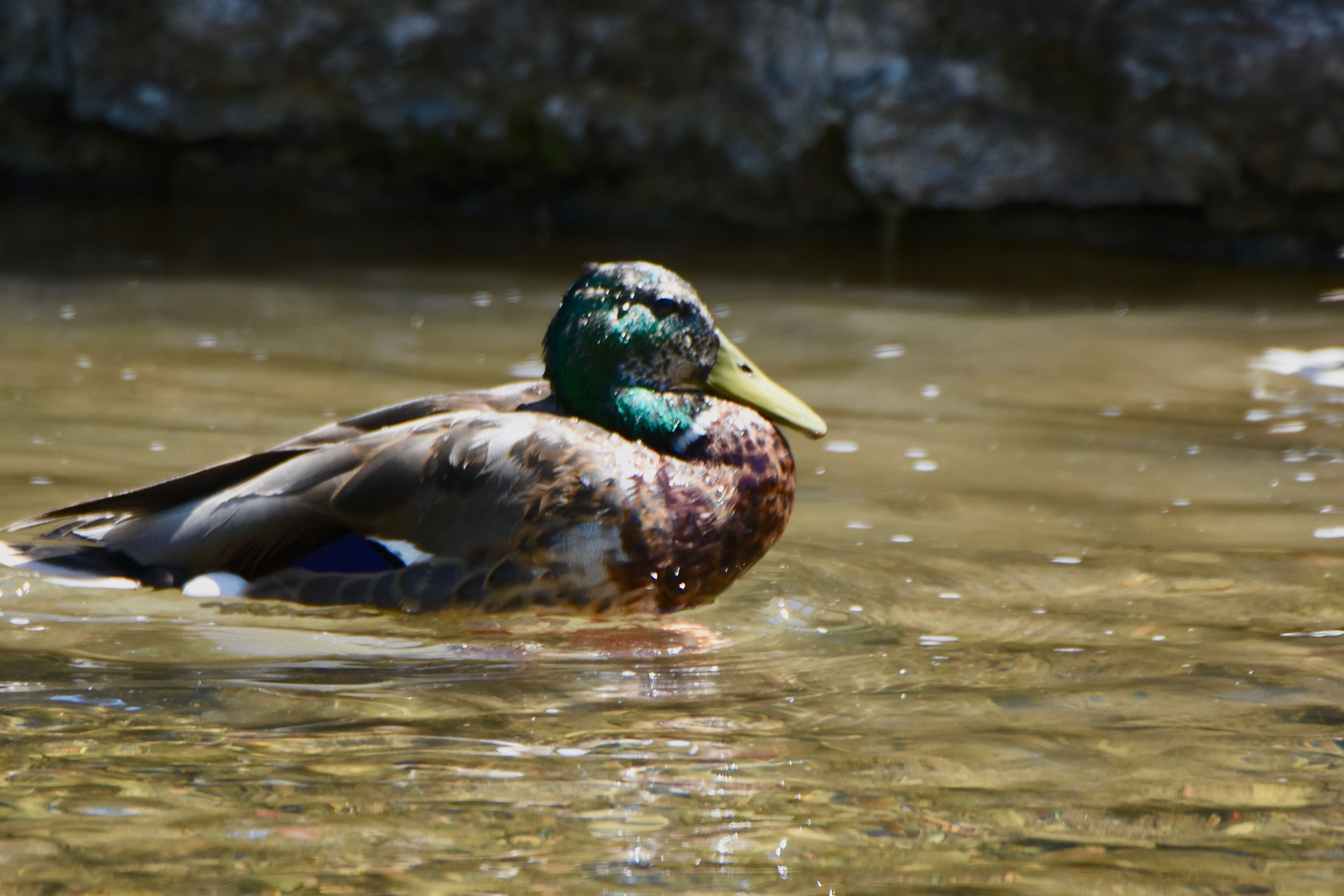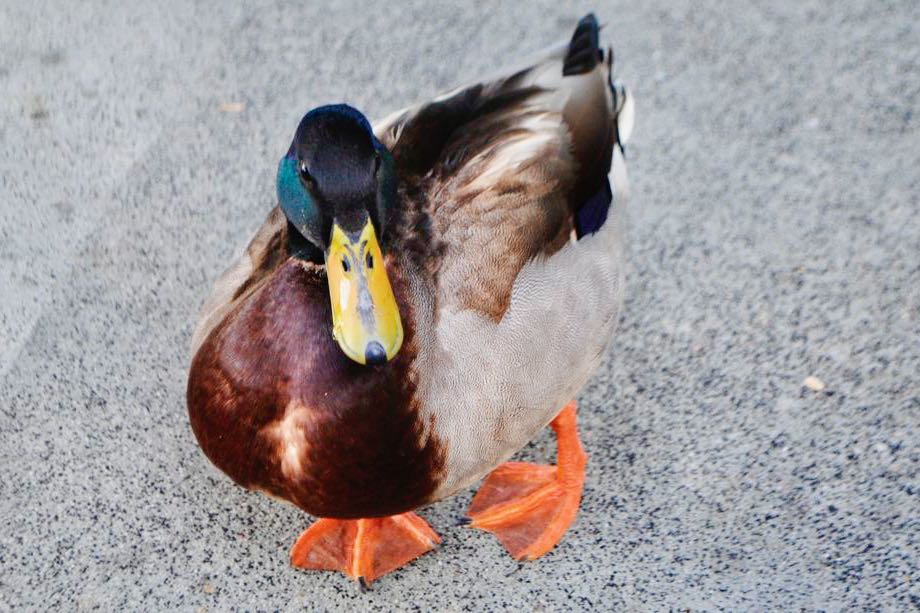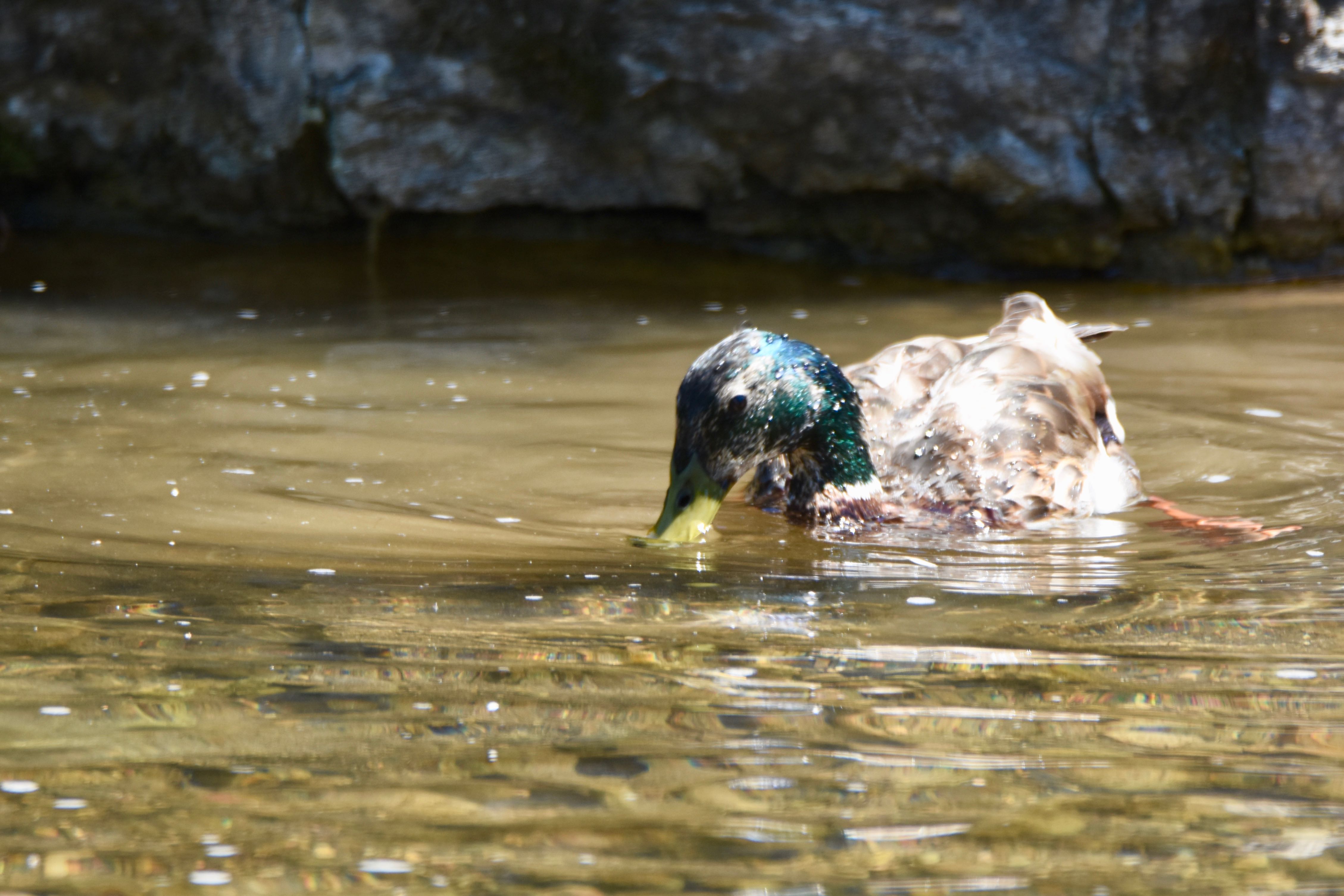
Mallard, photographed at Canyon Park, Rapid City, South Dakota, in June 2017.
The mallard, Anas platyrhynchos, might be the most recognizable of all North American ducks, largely because it is the most common duck on the continent. It's also arguably the most common duck in the world, found in Europe and Asia, with forms found in Australia, New Zealand and Hawaii.
A bright green head, white neck ring, bright orange legs and feet make male mallards — called drakes — easy to identify. Females and juveniles are a bit more more difficult. Females are mottled brown but have a dark purplish blue patch on their wings. They are large ducks, going two feet in length, with a wingspan that can approach or exceed three feet. They're hefty birds, going two to three pounds.
A part of the mallard population is migratory, flying in summer to Alaska and northern Canada to breed, heading south in the fall to warmer climes found in the southern United States, Cuba, Mexico and Central America. Others spend the year in a wide swath of the continent that include coastal Alaska and Canada, through the Northwest, California, across the rockies, Great Plains and into the Mid-Atlantic states.
There are two mallard populations in Florida: migratory mallards who visit primarily the northern and central part of the state during the cooler months, and a feral population — domesticated ducks that have been released or escaped into the wild. These feral ducks can be found throughout the state year round. And because they're here year round they are a problem because they'll mate with native ducks, particularly mottled ducks, which are closely related and part of a group of duck species known as the mallard complex.
There are records of wild mallards occasionally nesting in Florida, but they are rare.
Mallards are dabblers, submersing their heads in water, their tail ends sticking up, in order to feed. Their menu includes aquatic plants, small fish and invertebrates. During breeding season, mallards are more carnivorous; during migration, they'll hit a farmer's field for seeds.
Mallards form pairs, beginning in the fall and winter, and produce one, sometimes two, broods a year. They nest on dry ground in dense vegetation usually near water, sometimes on stumps and in tree hollows. Both males and females scout for a nesting site. Females use the vegetation on hand to build the nest, and line it with down from their breast. They lay as many as 13 eggs, although seven to 10 is more common. Average incubation time — only the female sits on the eggs — is about four weeks, give or take.
Once hatched, the young take to the water within 24 hours. They are able to feed themselves but follow their mother for protection. Males take no part in the rearing. Young mallards are able to fly after about two months from hatching. Rarely, mallards will raise a second brood in a season.
Mallards are a favorite target of duck hunters and are the source of almost all domesticated ducks. They can be quite tame and approachable in park settings, but wary of humans while in the wild.
Mallards are members of Anatidae, the duck family.



